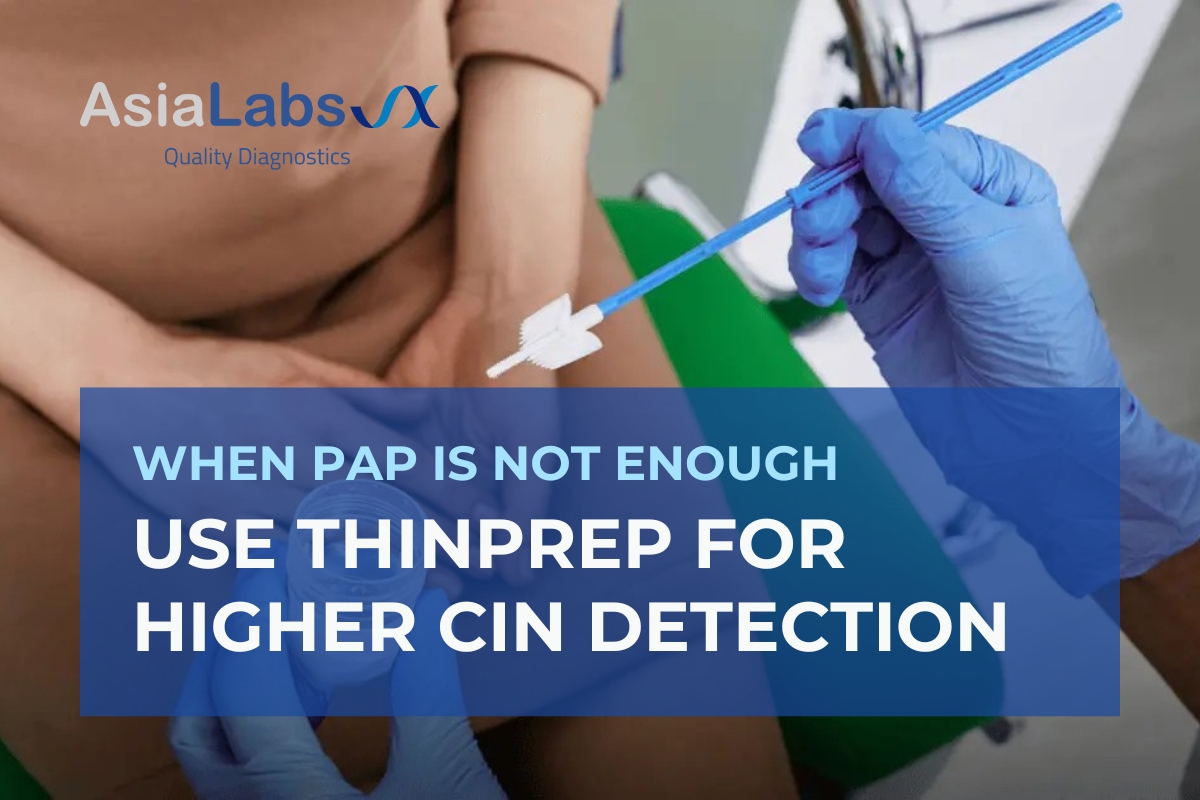Why Conventional Pap Tests May Miss Early CIN
For more than half a century, the Papanicolaou test—or Pap smear—has been the backbone of cervical cancer prevention programs worldwide. It has saved countless lives by enabling the early detection of pre-cancerous lesions. Yet, despite its population-level success, clinicians and cytotechnologists have long recognized its intrinsic limitations.
The conventional Pap involves scraping cervical cells with a spatula or brush, smearing them directly onto a glass slide, and fixing the sample for microscopic examination. This simple process, however, is prone to variability at every step. Cells may be unevenly distributed, clumped, or obscured by mucus, blood, or inflammatory debris. If the smear dries too quickly, cellular details become distorted.
Even with meticulous technique, the diagnostic yield depends heavily on sample quality and the observer’s ability to identify subtle epithelial changes amid a cluttered background. Studies estimate that up to 20–30% of false-negative results occur with conventional smears—most often due to sampling errors or inadequate fixation.
In clinical terms, this means that early-stage cervical intraepithelial neoplasia (CIN)—especially low-grade or focal lesions—can easily be missed. Women harboring high-risk HPV infections may receive “negative” results despite harboring evolving disease, delaying intervention and increasing long-term risk.
As screening guidelines shift toward risk-based approaches emphasizing precision and reproducibility, it has become clear that the Pap smear alone is no longer enough.
Enter ThinPrep: The Science Behind Liquid-Based Cytology
Liquid-based cytology (LBC) was developed to overcome precisely these limitations, and ThinPrep has become the most validated and widely adopted system in this category. Instead of smearing cells directly onto a slide, the cervical sample is rinsed into a vial containing a preservative solution. In the laboratory, the sample is processed to remove obscuring material and then filtered to produce a uniform, single-cell layer.
This transformation in preparation technique yields dramatic improvements in clarity and consistency. The cellular monolayer eliminates overlapping cells and background artifacts, while preserving crucial nuclear and cytoplasmic details.
The result is a clean, standardized slide where abnormal cells—such as those of CIN 1, CIN 2, or CIN 3—can be more easily recognized. Pathologists can focus on diagnostic interpretation instead of fighting through debris and uneven smears.
Large-scale trials and national screening programs have repeatedly demonstrated the clinical impact of ThinPrep. Compared with conventional Pap methods, detection of high-grade CIN increases by 50–60%, while detection of low-grade lesions also improves substantially. Importantly, this increase does not come at the cost of more false positives; specificity remains high.
By improving both specimen adequacy and interpretive accuracy, ThinPrep bridges the gap between early detection and timely treatment—precisely the goal of preventive cytology.
Quantifiable Gains in Sensitivity and Specificity
In evidence-based medicine, technology must justify itself through data. ThinPrep has done so convincingly. Across multiple meta-analyses and comparative studies, the following performance gains are consistently reported:
-
Sensitivity: from approximately 55–60% (conventional Pap) to 80–90% with ThinPrep
-
Specificity: remains robust at around 90%
-
Unsatisfactory sample rate: drops from 10–15% to below 2%
Each percentage point represents a woman spared from a missed diagnosis or unnecessary repeat test. For healthcare systems, this means fewer follow-up visits, reduced laboratory workload, and improved cost-effectiveness over time.
Clinically, the implications are even greater. Early recognition of CIN2+ lesions allows for outpatient management—such as LEEP or ablative therapy—before progression to invasive cancer. When integrated into population-level screening, the cumulative effect is a measurable decline in cervical cancer incidence and mortality.
Integrated HPV Co-Testing and Reflex Testing
Perhaps one of ThinPrep’s most strategic advantages lies in its compatibility with molecular testing. Because cells are preserved in a liquid medium, the same vial can be used not only for cytology but also for HPV DNA testing, genotyping, or biomarker analysis—without requiring a second sample collection.
This “one sample, multiple tests” model streamlines both patient experience and laboratory workflow. A clinician can order reflex HPV testing for women with atypical cytology (ASC-US) or perform primary HPV screening followed by cytology triage—all from the same ThinPrep vial.
This integration is particularly valuable for HPV 16 and 18, the two most oncogenic strains responsible for roughly 70% of cervical cancers worldwide. Reflex genotyping ensures that women with normal cytology but high-risk HPV positivity are not falsely reassured and instead receive appropriate colposcopic follow-up.
ThinPrep is more than a laboratory upgrade—it’s a breakthrough in women’s health diagnostics. By reducing artifacts, enhancing sensitivity, and enabling integrated HPV testing, it ensures earlier, more accurate detection of cervical changes that save lives. For modern clinics and ISO-accredited labs, it has become the new gold standard for cervical cancer prevention.

